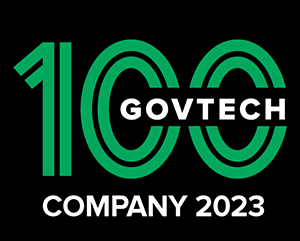How to Sell Camino to Your City Manager
Posted on March 20, 2023
I’ve seen dozens of Community Development Directors, Planning Directors, and Building Officials fall in love with great software only to fall short when making the case to city leadership.
The story usually goes something like this: We have an amazing call with a development leader, let’s say her name is Jane, where we discuss how Camino can improve the department’s operations. Jane’s in charge of a department that is facing increasing permit volume and staff are overwhelmed by the number of calls, questions, and incomplete applications they encounter every day. Jane leaves the meeting with an understanding of how the Department and City would benefit from Camino and brings this up in her next meeting with City Council. After a few weeks (or months), the Council decides that while Camino would be nice to have, they don’t see it as a priority right now. Ultimately, Jane is forced to return to the status quo.
Did Jane do anything wrong? At face value, no. Jane saw a solution that could help her team and communicated that to her superiors. Are there ways to help Jane become more effective in selling Camino to City leadership? Yes.
Here are the three steps any Community Development Leader can follow to communicate the value of Camino to City Management:
1. Understand How the Solution Will Change Your Department for the Better
The first (and simplest) step is to establish an understanding of how the solution benefits your department. While this is the most straightforward step, making sure you do this right will be very important for later conversations. Consider the Return on Investment properly. Local Governments are not businesses beholden to shareholders, they are organizations that are ultimately working for and held to account by their communities. Camino has done a lot of work to measure how much time and money we can save your organization, but that isn’t the meaningful part of our ROI for agencies.
When you are thinking about the value of Camino for your department, look beyond the time and money savings you’ll see, and try to figure out how those savings will impact your customers, the applicant. These impacts will depend greatly on the types of challenges and bottlenecks that exist in your current process and the type of organization you are (large, small, growing, etc…).
Some examples include:
- Applicants can understand the development process independently and are equipped to have educated conversations with staff about their project
- Staff will be more available for residents that truly need their expertise, unlike a simple zoning check
- Applicants will get their final approvals faster, and their projects are done sooner.
Make sure you can clearly communicate this value before you move on to the next step.
2. Understand How Those Department Changes Will Impact Your Larger Organization and Gain Consensus
The next step is to identify how these improvements will impact your organization. Enabling things like Land Development and Business growth can easily be connected to larger goals, but sometimes there are short-term goals you can fit into. For example, many cities are thinking about ways to make their services more accessible to people of all languages. Some cities are looking for ways to build transparency and trust with their citizens. There are also cities that are actively looking for ways to be on the cutting edge of customer service. Sometimes this can even be an actual directive or mission coming from city management. The ability to connect your department’s improvement to the achievement of key objectives for your City or County Manager can be the difference between your budget item being prioritized or slid in the “nice to have” category.
The key to this step is to make this a group effort. Insight from Camino staff, other department heads, and your own staff will be essential in figuring out the most powerful message to deliver when you show up to the budget meeting. It’s worth having a conversation with permit techs, planning commission members, and IT to figure out how Camino would benefit them. This will pay off greatly and throw even more support behind your case, not to mention remove unwanted roadblocks or surprises down the road.
3. Communicate How That Impact Will Help Achieve Your Organizational Goals
Once you’ve discussed and have an understanding of how Camino can impact your agency on all levels, you’re ready to make the case to leadership. When you talk about Camino, remember to communicate the value it will bring to your organization versus your department. Here’s an example to illustrate the difference:
A – I’d love to purchase Camino’s guide because my applicants are currently struggling to understand how to successfully navigate the permit process. I also want to allow staff to spend their time more efficiently by cutting down on phone calls and mistakes.
B – I’d love to purchase Camino’s guide so residents can independently navigate our city’s services without having to rely so heavily on staff. This will make us more efficient while increasing our accessibility and can help facilitate the small business growth in our new downtown district.
Both statements are true, but only one of them will convince management that Camino is something they should act on NOW.
Following these three steps can prepare you to make your best case for Camino, or any new purchase you think can change the way you do business for the better. Never be afraid to combine your pitch with additional resources like videos, case studies, or notes from reference calls. Remember that you have talked about this with other key stakeholders in your organization so you can even ask them to comment briefly on how their department will benefit from the project.
Camino is happy to provide any of these resources or help with planning as well. Feel free to reach out to your Account Executive or support@oncamino.com
– Aidan Cyr, Camino Account Executive

